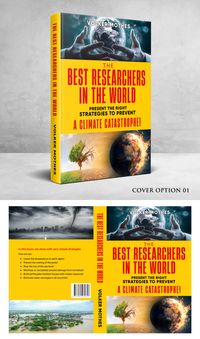IStartseite | Author Volker Mothes I Climate change I Is the popular sauna healthy I IMPRESSUM |
Autor Volker Mothes
The Best Researchers in the World Present the Right Strategies
to Prevent a Climate Catastrophe!
The Best Researchers in the World Present the Right Strategies to Prevent a Climate Catastrophe!
We have developed many groundbreaking ideas that will change the world significantly.
In this book, we show with very simple strategies.
How we can:
- Lower the temperature on earth again!
- Prevent the melting of the poles!
- Stop the rise of the sea level!
- Minimize or completely prevent damage from tornadoes!
- Build earthquake-resistant houses with simple measures!
- Eliminate water shortages in all countries!
ISBN 9783981470857
Small excerpt from the pages in the book.
The role of cities in climate change.
What caused the accelerated rise in temperature over the last 50 years?
The reason is quite simple: humanity itself. Indeed, we are the main cause of global warming, and with more people being born every day, the climate is inevitably warming even more.
In essence, overpopulation is responsible for global warming and climate problems are directly related to population growth.
In July 2023, there will be 8,103,075,138 people living on Earth, one hundred million more than just a year ago.
This is exactly where the climate catastrophe begins for us.
What does population have to do with global warming ?
An average person produces more than 100 watts of body heat per hour during light activity, and even more during increased activity.
To illustrate:
Activity level Power generation Rest
This is not a problem for an individual as to global climate change, but in the aggregate, it changes everything.
A simple calculation shows that the eight billion people on earth produce at least 800 billion watts of body heat per hour, which is equivalent to 100 million kilowatt hours.
And when people exercise, these values rise dramatically. In other words: all of humanity produces as much heat in one hour as 400,000,000 electric space heaters operating at 2000 watts each.
It is important to note that these figures only take into account human activity.
There are an estimated eight billion farmed, wild and domestic animals on earth that also generate heat, all day, every day.
“YES!”
But this simple answer cannot be the end of the analysis. Here is our clarifying, more comprehensive answer to this important question:
Imagine that in an uninhabited, forest-covered area, the forest is cut down and a residential area, a small settlement, is built.
That's what happened in New York City, and it remains the perfect example.
Approximate population of New York
The development of New York City is not unique in the world, but you can clearly see that in just 250 years, a once uninhabited area of farm land has become one of the largest cities in the world. New York City, with its endless buildings, streets, supermarkets, schools, parking lots, airports and much more, has never been constant. It continues to grow every day.
Thousands of cities around the world have undergone a similar evolution over time, from wilderness to concrete jungle. But the city has become just as harmful to the climate as the cars and trucks on America's roads.
Compare the environment inside the city with that in a forest. When the sun shines on an uninhabited forest, the forest floor remains very still. Its trees provide shade. Above all, however, there are virtually no thermal updrafts in the forest ecosystem.
Indeed, another negative effect of the city is the constant development of updrafts and thermals.
They strengthen the regional winds and thus reinforce the cycle of atmospheric destruction.
When air rises into the atmosphere, other air must flow in to replace it near the ground. More wind in an urban environment, the faster soil in the area dries out.
The result of these drier soils is lower yields, often even crop failures.
Through urban development, many trees are necessarily removed, creating conditions that favor even more thermals and updrafts.
In the city, thermal energy is generated by roofs and other surfaces of buildings. They heat up considerably due to the sun's rays and this heat has a direct effect on the climate. But it is not only trees that influence this principle. Roads also heat up because their dark color absorbs more sunlight than it reflects.
Cars also heat up in the city, which usually depends on their paint color.
Black cars heat up much more (and faster) in the sun than white cars. And this heat flows upwards, because heat always rises. When the sun shines on the city, heat always rises.
And in every large city there are millions (perhaps even billions) of surfaces that influence how much heat is generated.
The city is an amazing place of thermal activity, and that implicates climate change as we know it.
When the sun's rays hit surfaces in the city, an enormous amount of thermal energy is generated, which all rises upwards. But the sun is not the only reason why this settlement generates more thermals. In a forest, thermals are less likely to develop because the trees do not heat up as much. Instead, the trees reflect the sun instead of absorbing it.
So, it's not just about the heat, but also how this heat is absorbed and stored..............

